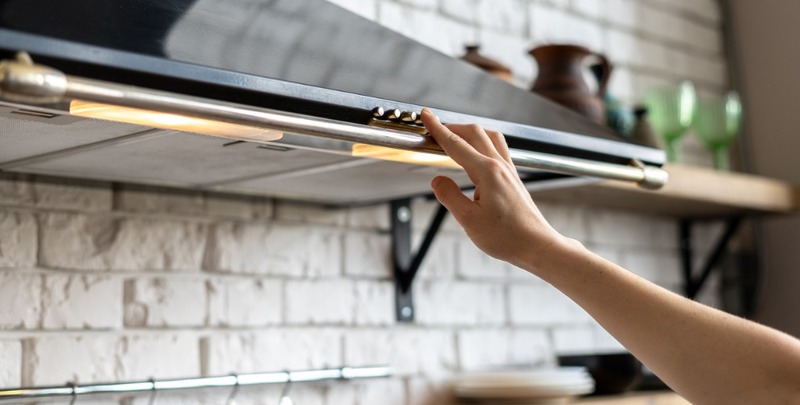
Get to Know the Types of Exhaust Fans
When it comes to breathing fresh air in all areas of the home, exhaust fans play an important role. There’s a lot more to it than just needing a bathroom exhaust fan to reduce the amount of steam while you’re taking a shower.
Are you getting the ventilation you need in all the busiest areas of your home, such as the bathroom, kitchen, laundry and even your main living room? Bathroom exhaust fans are probably the most crucial, but ventilation is just as important in the kitchen and other areas.
The basic function of exhaust fans is to remove the stale air in the room and replace it with new air from outside. As such, there are numerous options for different areas of the home that should be considered.
So, let’s look at the different types of exhaust fans on the market and what their functions are.
How Are Exhaust Fans Rated?
The size and type of exhaust fan you need to install depends on the room’s function and dimensions.
Exhaust fans are rated for the amount of air they can move, which is measured in cubic metres per hour (m3/hr). In other words, the air changes per hour.
You need to measure your room by width, length and height. From those details an exhaust fan professional can calculate the general capacity range in m3/hr (or the number of air changes per hour) that is required, taking into account the room’s main function.
1. Ceiling Exhaust Fan
Ceiling exhaust fans are most often installed in a room that is not adjacent to an outside open space, so the air must be channelled through an exhaust duct in the ceiling.
The duct is installed either on the ceiling or inside the ceiling, which distributes the air to the outside of the home. Ceiling mounted fans require a Mechanical Ventilation Heat Recovery (MVHR) system.
It might also be practical to choose ceiling exhaust fans with a light, or perhaps a heater for the bathroom. Ceiling mounted ventilation fans are probably the most common type of exhaust fans used in bathrooms.

2. Wall-Mounted Exhaust Fan
This is the most common and popular form of exhaust fan used in homes, particularly in residences with walls directly opposite an open area.
The wall-mounted exhaust fan is designed to suck smoke, steam, grease and foul air out of the home. It does not require a MVHR or exhaust ducts.
Wall exhaust fans are designed for all domestic applications, including bathrooms, kitchens and laundries. They are particularly handy when there’s limited ceiling/roof space.
3. Inline Exhaust Fan
Inline exhaust fans can be particularly powerful but use less energy than other fans. An inline exhaust fan is mounted inside or connected to ducting and is used for extraction purposes.
These fans can be used to dissipate heat, moisture and stale air from large rooms. These exhaust fans are often used with flexible duct tubes and accessories such as silencers and carbon filters.
4. Window Exhaust Fan
Window exhaust fans are designed to fit neatly into a window and usually have one large fan or two smaller fans side by side.
A window exhaust fan can be reversible so the householder can switch between in and out modes.
Window exhaust fans may also have a thermostat that will turn off the fan if the temperature drops to a certain level. Most of these fans have two or three variable speeds.
5. Rangehood Exhaust Fan
A rangehood exhaust fan is designed to remove steam, smoke, odours and gases from the kitchen when cooking. It is crucially important for indoor air quality in the kitchen.
When installing a rangehood fan, you need to think about where the air is going. Generally the unit is mounted on the wall behind the stove and the air is vented through the wall.
Most oven rangehood exhaust fans use a filter to remove cooking odours, along with an oil filter as well as a carbon (or activated charcoal) filter.
These quality exhaust fans can be duct-mounted or recirculated. A recirculated rangehood exhaust fan is easier to install as there’s no need for ducting.

6. Exterior Exhaust Fan
This type of exhaust fan actually draws air inside the building and blows out used air.
The exterior exhaust fan is ideal for those who want to eliminate noise inside the home. This type of fan has a unit that is outside the home and is similar to a wall-mounted exhaust fan.
Other Exhaust Factors to Consider
Besides the dimensions of the room and the room’s main function, there are other factors to take into account when finding the right exhaust fan for your needs.
These details can be crucial in you achieving your desired result:
- What is the room made up of? (e.g. tiles, floorboards, windows, glass, mirrors).
- Is there sufficient air flow into the room?
- Is there good cross-flow ventilation in the room?
- Levels of dampness or excessive humidity
- Is the exhaust fan ducted? This will have an impact on how effective it is – the longer the ducting, the less capacity the fan has.
In conclusion, these many different types of exhaust fans all have specific purposes.
Knowing the reasons you need the fans, the dimensions of the relevant rooms and the other factors to consider will go a long way towards you making the correct choices. If you need help, contact the experts at Mr Emergency.
Please note: This information is provided for advice purposes only. Regulations differ from state to state, so please consult your local authorities or an industry professional before proceeding with any work. See our Terms & Conditions here.


